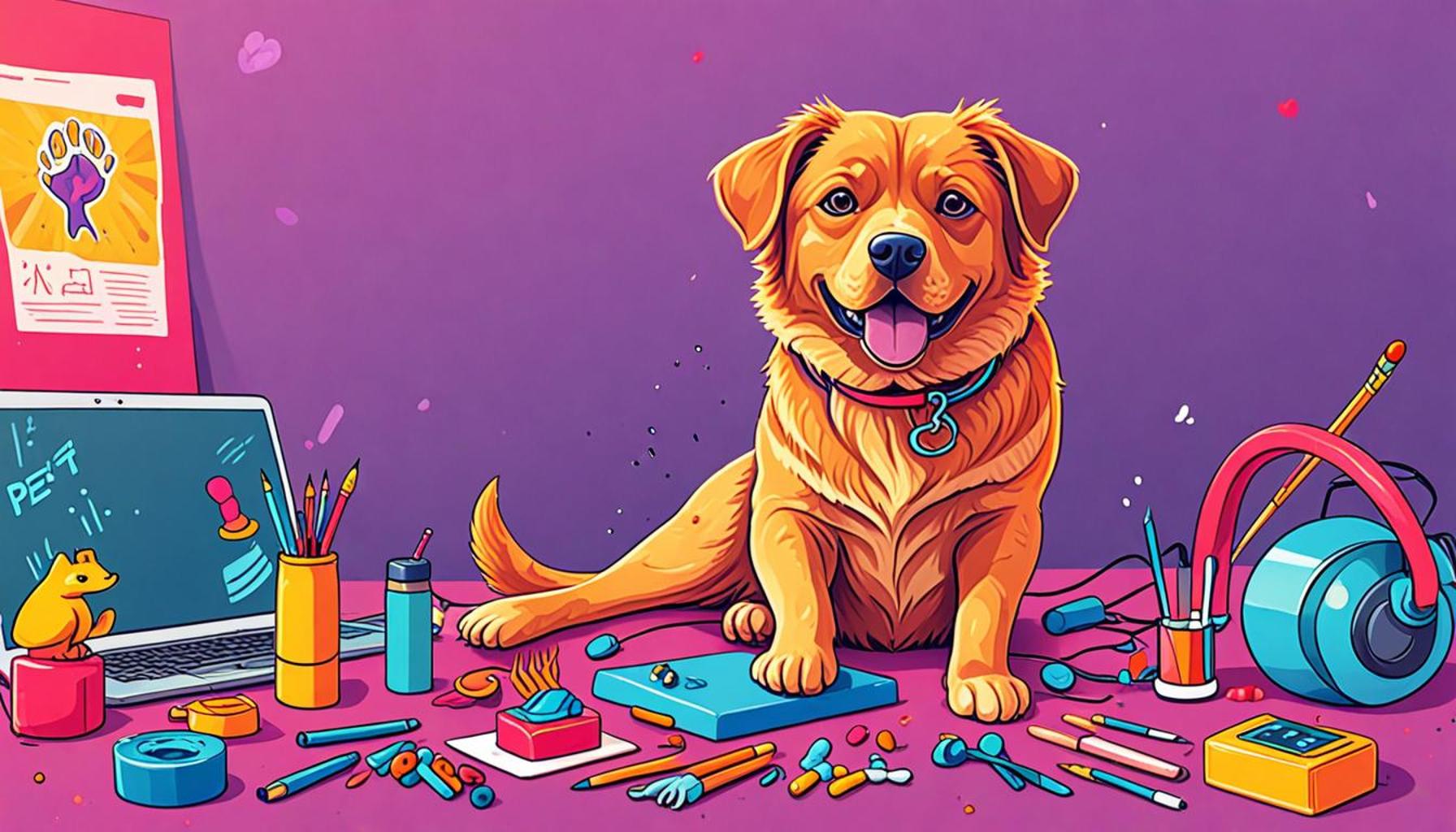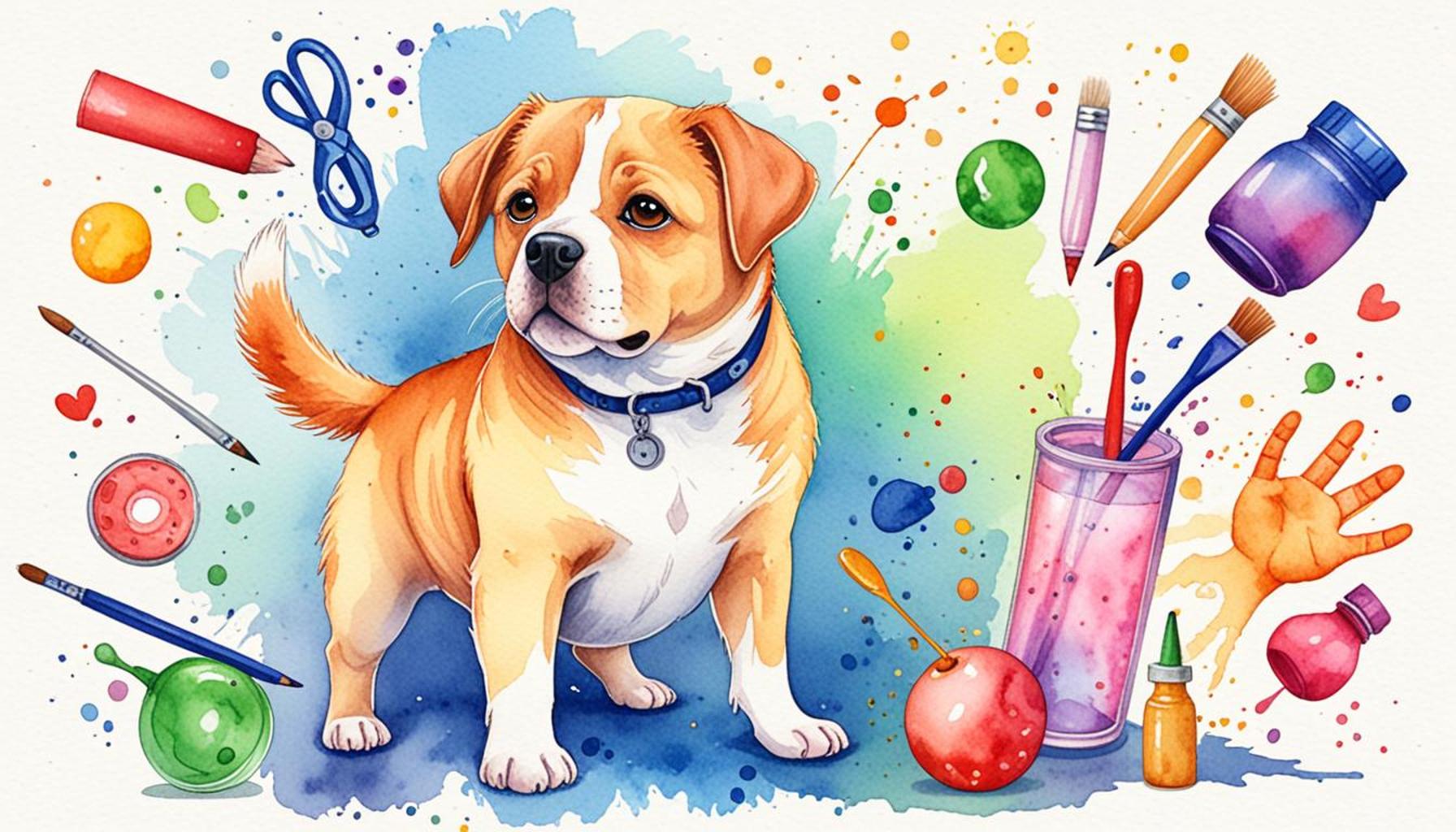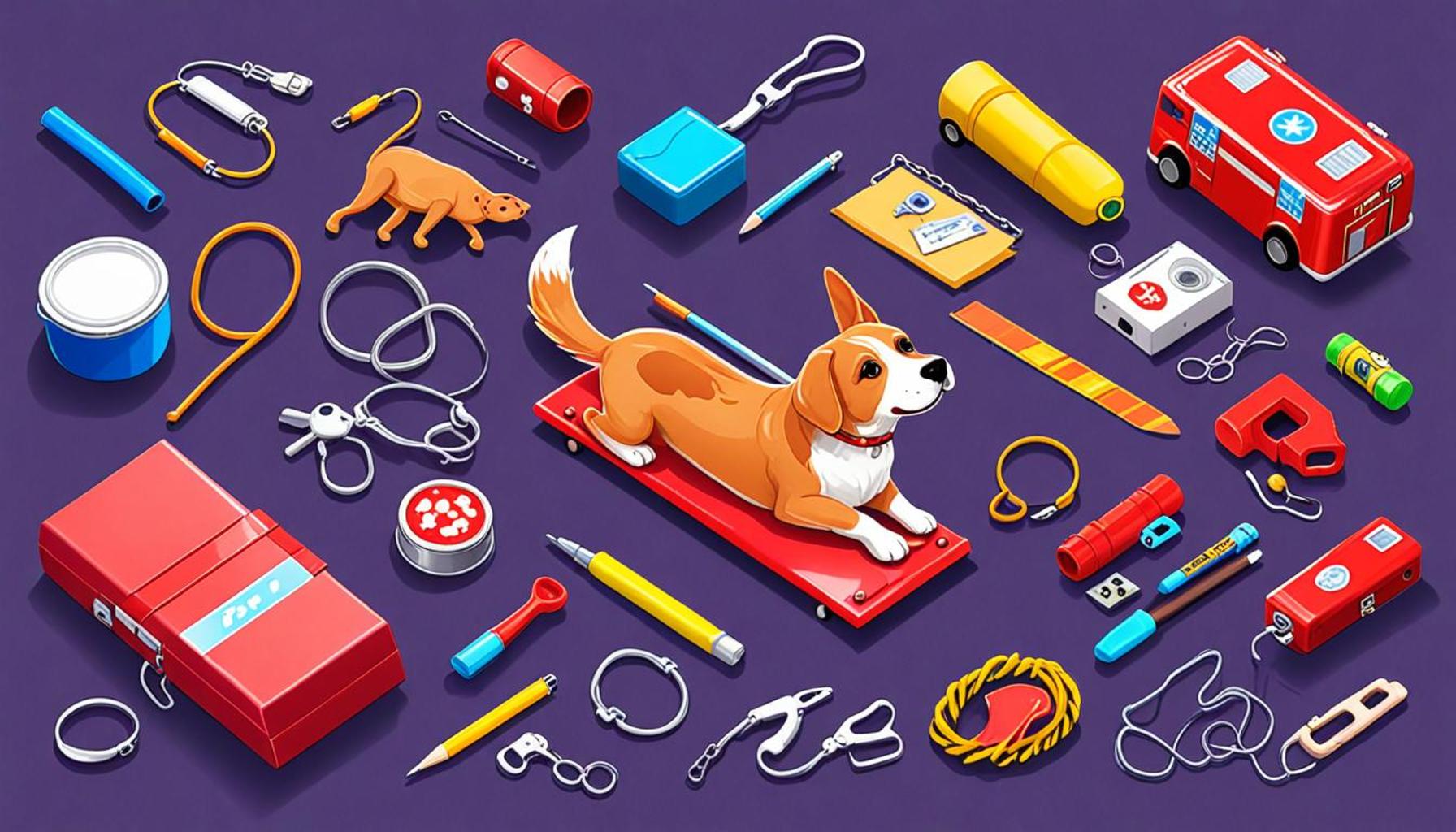How to Train Your Pet for Self-Control Behaviors

Understanding Self-Control in Pets
Pet training is not merely about instilling commands; it is a vital journey that enhances the quality of life for both pets and their owners. One of the cornerstones of effective pet training is teaching self-control behaviors, which play a pivotal role in ensuring the safety of pets, as well as their harmonious coexistence with humans and other animals. Self-control can be understood as the ability to refrain from impulsive actions and wait for an appropriate cue. This learning process can significantly enhance a pet’s behavior, making them more adaptable and easier to manage.
For instance, consider the simple yet powerful act of a pet waiting for their food. Teaching a dog to sit and stay until given the signal to eat not only promotes discipline but also sets the stage for calmness during mealtime. Similarly, if a cat learns to stay put while doors are opened, it minimizes the risk of accidental escapes, which are common in household pets, particularly in homes with busy entrances or stairways.
Examples of Self-Control Behaviors
Many self-control behaviors can be taught effectively. Here are some notable ones:
- Waiting calmly for food: This behavior cultivates patience and reduces aggressive behaviors during feeding times.
- Staying put while doors open: This crucial behavior protects pets from wandering outside into dangerous situations.
- Resisting the urge to chase distractions: Teaching pets to focus on their owners despite external stimuli can greatly reduce incidents of chasing cars, people, or wildlife.
Benefits of Teaching Self-Control
The benefits of instilling self-control in pets extend beyond individual behavior improvements. Firstly, it enhances safety in various environments. A pet that can remain calm during chaotic situations—like holiday gatherings or vet visits—demonstrates better coping mechanisms, reducing stress for both the animal and the owner. Additionally, self-control fosters enhanced social interactions. Pets that exhibit self-control are often perceived as more sociable and less aggressive, making it easier for them to engage positively with other pets and people. This improves not only the pet’s experience but also the owner’s interaction with their community.
Moreover, a well-trained pet can mean less stress for the owner. The peace of mind that comes from knowing a pet can be trusted in various situations allows owners to relax and enjoy their time with their furry companions without constant worry about their behavior.
Getting Started
Embarking on the journey of training your pet in self-control requires a commitment to patience and consistency. Using positive reinforcement techniques—such as treats, praise, and play—can make the training rewarding and enjoyable. Remember, the more you invest in teaching these vital skills, the more fulfilled and well-adjusted your pet will become. This shared journey not only strengthens your bond with your pet but also lays the groundwork for a more harmonious household. In the sections that follow, we will explore various techniques and strategies to effectively teach these essential self-control behaviors, equipping you with the tools necessary for nurturing a well-mannered companion.
DISCOVER MORE: Click here for essential tips on keeping your pets healthy
Essential Techniques for Training Self-Control Behaviors
Training your pet to exhibit self-control behaviors may seem daunting at first, but with the right techniques and strategies, you can make this process both effective and enjoyable. The key lies in breaking down the training into manageable steps while ensuring that your pet remains engaged and positive throughout the experience. Here are some essential techniques that can help you instill self-control in your furry friend:
Positive Reinforcement
At the heart of effective pet training is the concept of positive reinforcement. This technique involves rewarding your pet for exhibiting desired behaviors, encouraging them to repeat those actions in the future. Rewards can come in various forms, including tasty treats, verbal praise, and playtime. When your pet successfully waits for food or resists the urge to chase a squirrel, immediately acknowledging and rewarding this behavior reinforces the lesson learned. This association between the behavior and the reward strengthens the bond between you and your pet while enhancing their learning process.
Consistency is Key
Maintaining consistency in your training methods is crucial for successfully teaching self-control behaviors. This means using the same cues, signals, and rewards every time to avoid confusing your pet. If you use commands like “stay” and sometimes reward your pet while other times you don’t, the mixed signals can hinder their understanding of what is expected. Create a set routine for training sessions and keep the environment as distraction-free as possible, especially when initially teaching these behaviors.
Gradual Progression
Patience is essential when working on self-control behaviors. Start with simple tasks and gradually increase the complexity as your pet becomes more proficient. For example, before teaching your dog to wait calmly while you open a door, practice basic commands such as “sit” and “stay” in quiet environments. Once they master these commands, incorporate more significant distractions, like having someone knock at the door. This gradual progression helps build their confidence and ability to handle distractions effectively.
Utilizing Duration and Distance
Another effective technique in training self-control is the use of duration and distance. This involves teaching your pet to hold a position for longer durations or at increased distances from a distraction. For instance, if you’re teaching a dog to stay, start by rewarding them for remaining in a sitting position for just a few seconds. Gradually increase this time to a minute or longer as they become more comfortable with the expectation. Additionally, you can increase the distance between you and your pet during training to further enhance their self-control capabilities.
Understanding Your Pet’s Behavior
Each pet is unique and may respond differently to training methods. Pay attention to your pet’s behavior and adjust your strategies accordingly. Some pets may need more sleep or may feel anxious in certain situations, which can affect their ability to focus. By understanding their mood and state, you can adapt your training session to ensure they are receptive to learning. The more you tailor your training to their specific needs, the more effective it will be.
By implementing these techniques, you’re not just teaching your pet valuable self-control skills; you’re also enriching their lives and enhancing the bond you share. In the following sections, we will delve deeper into specific self-control exercises for various pets, providing you with actionable steps and tips to make training enjoyable and rewarding.
| Category | Key Features |
|---|---|
| Positive Reinforcement | Essential for building trust and fostering a positive learning environment for your pet. |
| Impulse Control Techniques | Encourages patience and helps in managing energy levels through various engaging exercises. |
To effectively train your pet in self-control behaviors, the method of positive reinforcement is vital. By using treats and verbal praise, you can create an atmosphere of enjoyment while correcting undesirable behaviors. This approach not only enhances engagement but also strengthens the bond between you and your pet, making learning a shared and rewarding experience.Another aspect to consider is the implementation of impulse control techniques. These exercises, like “wait” and “leave it,” help your pet develop patience. Through consistent practice, pets learn to manage their excitement and focus on tasks, contributing to better behavior over time. Such training not only yields immediate results but reshapes long-term habits, making it an essential component in effective training regimes. Engaging in these practices also stimulates your pet’s mental capabilities, leading to a more balanced and well-adjusted companion.Remember, consistency is key! By employing these strategies, you’re paving the way for a more disciplined and responsive pet.
DIVE DEEPER: Click here to discover more about socialization in puppy training
Advanced Strategies for Fostering Self-Control in Pets
Once you’ve established a solid foundation in training your pet for self-control behaviors, it’s time to build on that progress with advanced strategies. These techniques not only reinforce the skills your pet has learned but also help in developing their ability to remain calm and composed in various situations. Here are some advanced approaches that can take your training game to the next level:
Impulse Control Exercises
Implementing specific impulse control exercises can greatly aid in teaching your pet self-regulation. One popular exercise involves the use of a cardboard box or a designated spot for your pet to “go to.” When you give the command, your pet learns to move to the specified area and stay there until released. Start by rewarding them for short stays and gradually increase the time spent in that spot. This forces your pet to learn patience and control, especially when distractions are present.
Four-Stage Recall Training
Another valuable technique is the four-stage recall training, which enhances your pet’s ability to come when called—especially when distractions abound. Start with just their name or a specific command, encouraging them to come to you from short distances. Gradually increase the distance and introduce distractions such as toys or other pets. The progression to four stages involves training your pet to respond to their name, reinforce it with enthusiasm, add distractions, and finally, call them away from exciting activities. This method builds a solid recall response and reinforces their ability to exercise control in tempting situations.
Structured Play Sessions
Incorporating structured play sessions can simultaneously provide exercise and training. During play, especially with toys or games that require waiting for a cue (like fetch), focus on command reinforcement. For example, before throwing the ball, instruct your pet to “sit” or “wait.” This anticipatory behavior trains them to control their excitement. Remember to reward them each time they successfully adhere to the command before engaging in play. This not only fosters self-control but also makes the play session more rewarding.
Real-Life Self-Control Scenarios
Integrating your training into everyday life is crucial for reinforcing self-control behaviors. Begin by identifying common situations where your pet struggles with self-control. For instance, if your dog jumps up when visitors arrive, practice greeting scenarios during training. Allow them to practice sitting calmly while you have someone knock on the door, rewarding them for good behavior. This real-world application not only makes training feel relevant but also better prepares your pet for day-to-day encounters.
Mindfulness Techniques
Mindfulness isn’t just for humans; it can also be beneficial for pets. Teaching your pet to engage in mindfulness techniques can help them center themselves and increase their self-control. Simple practices like spending quiet time together in a soothing environment can help your pet learn to relax and manage anxiety. Consider using interactive toys that require focus and patience, such as puzzle feeders. These activities provide mental stimulation while promoting a calm demeanor, thus enhancing their ability to self-regulate their impulses.
Through these advanced strategies, you are not only preparing your pet to handle their impulses but also enriching their experience and connection with you. Remember that training is a journey; patience, creativity, and positive engagement will yield the best results as you guide your pet towards mastering self-control behaviors.
DISCOVER MORE: Click here to enhance your pet’s diet
Conclusion: Mastering Self-Control in Pets
Training your pet for self-control behaviors is an invaluable investment in their wellbeing and your shared environment. As we’ve explored throughout this article, establishing a strong foundation of basic commands sets the stage for advanced training techniques that foster patience, composure, and impulse regulation. Utilizing methods such as impulse control exercises, four-stage recall training, and incorporating structured play sessions creates a multifaceted approach that enriches your pet’s life.
Beyond specific strategies, it’s essential to recognize the role of everyday scenarios in reinforcing self-control. Real-life applications ensure that your pet is not only trained in a controlled setting but learns to adapt in the unpredictability of daily life. Owning a pet is a partnership that thrives on mutual understanding, and by teaching them mindfulness techniques, you are deepening your connection while enhancing their emotional resilience.
As you integrate these strategies into your routine, remember that consistency and patience are key. Progress is often gradual and requires a commitment to building a trusting relationship with your furry companion. By investing time into their development, you’re not only cultivating self-control behaviors but also enriching your pet’s life, improving their behavior, and enhancing both your lives together.
So, embark on this rewarding journey of training—your pet’s growth and your bond await. With dedication, creativity, and positive experiences, you’ll find that mastering self-control behaviors can lead to a joyful and harmonious relationship with your beloved pet.


